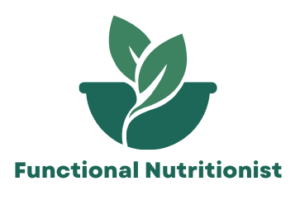There is growing awareness in the bustling cities and serene landscapes of Arizona. It is as if the winds of change are blowing, urging people to change their thinking with regard to nurturing their bodies and souls. The functional nutritionist has been in the lead, guiding Arizonans in the direction of health-a health which contemplates not only immediate but also long-term effects of malnutrition. This silent revolution-to repair what was once damaged and build a healthy tomorrow.

Childhood malnutrition is life’s cruel hand. It plants the seeds of struggles that will bloom many years later. Think of a building, but its foundation is a little awry. The skyscraper may be good to go for many years, but over time, the cracks will gradually appear. And those effects? They tend to linger.
Consider Sarah, a bright spark who grew up in Tucson. As a child, she often had to make do with scant meals and nutrient-light foods. The irony is that she is healthier now than ever before, thanks to this community that puts so much emphasis on holistic wellness. It just took some time to unravel past deprivations.
The consequences are not only physical. Sometimes the mental dimension gets affected. Imagine putting together a puzzle in which a few pieces are missing.
Well, this is how kids with nutritional gaps would feel. They grow with the whispers of malnutrition that disrupt focus, memory, and emotional stability. Not only is this like a Sisyphean task-to roll over that early malnutrition boulder-but it’s like running a marathon in flip-flops.
But there is hope-and strides made in Arizona, where innovative programs and compassionate professionals stand as parents’ and guardians’ allies, arming them with knowledge and resources to craft nutritious meals that fit within budgets and lifestyles. Community support can be felt everywhere, providing the springboard for those who are ready to leap into a healthier future. It is as if the state has gotten itself a superhero cape, prepared to save one young life at a time.
Ironically, the situation of childhood malnutrition has turned many in Arizona’s own personal demons into positive motivation. The land of resilience-this is a place where the arid landscape is used as a metaphor for beating the odds. These local heroes, from educators and community leaders to those committed to nutrition, marshal their words with acts that inspire observable change. They take fields and empty lots and turn them into community gardens where kids can learn the wonders of growing and consuming fresh vegetables.
Night and day. Whereas hunger used to gnaw in their tummies, appreciation now exists for the bounty of good food. Nutritional literacy has become as key as reading and writing. Schools are putting it into their curriculum to raise a new generation prepared well in the ways to forge a new path, free from the shackles of early-life deficiencies.
The ever-twisting kaleidoscope that is Arizona shoots sparks of hope across its communities. Be it Phoenix, Sedona, Yuma, or Flagstaff, natives are renaming the discourse that scarcity once wrote. It’s no more about what gets put on the plate but, rather, the whole journey toward wellness-a journey in which twists and turns are embraced and every small victory cheered.
The Vital Role of School Lunch Programs in Arizona
Arizonans went on a fascinating venture regarding the deployment of nutritionally balanced school lunch programs to combat malnutrition. These have been projected-as in most instances by a functional nutritionist-over the arid lands of the Grand Canyon State as the beacons of hope for healthful living in most communities. When lunchtime rings, those meals do much more than fill tummies; they nurture tomorrows.
Think about it: a noisier lunchroom, full of laughter and chattering kids and their utensils clinking against dishes. Every meal put on the table in school brings children closer to fulfilling their educational glory. School lunches may be the usual stuff, but researchers say nutritious meals have a great effect on the faculties of the brain, concentration, and energy levels. It is the unsung superhero which changes dreary, soporific mornings into hyperactive afternoons, much like Popeye and his favorite greens, sans the drama.
Carving pathways to health starts young. Ask Arizona’s educational warriors, and they’ll say nutrition can mold buzzing classrooms. Parents feel the weight lifting off their shoulders, knowing some of that broccoli-induced resistance at home gets reinforced by peer-approved vegetables in school. There’s power in those collective crunchy bites!
Nutritional challenges are surely not new, but that climb just got a lot steeper. Economic downturns coupled with the unavailability of healthy options leave many families hanging on to the teeter-totter of nutritional chance. That is where lunch programs strut in, unfurling their capes or, well, aprons. Sans your average sidekicks, these programs have a delicious array of foods to meet stringently approved standards, thumbing their roots back to balanced nutrition and flavor. No more beans tasting of nothing and raw carrots; thank you very much!
Engaging with the community, these lunch heroes pull wisdom from local sources, the growers, and the dietary aficionados. “Fresh produce is like love; you can’t fake it!” quipped a cafeteria manager from Mesa while dishing out a tangy salad. Involvement sprouts participation—schools rally with parents by inviting them to taste-test and approve, ensuring these meals indeed taste as good as they look.
Cutting through the noise, statistics reveal transformative results. With reduced hunger pangs, students in these programs experience notable ascensions in attendance and academic achievement. The ripple effect touches every part of their lives. Think about it, replacing incessant grumbles with actual growls of excitement for tarte tatin or superfood smoothies might just be the secret sauce Arizona’s been brewing all along.
Bella, a student from Tucson, shared, “The lentil soup is, um, an acquired taste. But now it’s growing on me!” A chorus echoing that, nutrition education becomes pivotal. Understanding components, students learn to identify healthy choices independently, even beyond lunch breaks.
These school lunch programs, at the nexus of enthusiasm and need, have achieved something magical: active compassion. They root the idea that growth comes from the roots-up-not in academic pursuit merely but personally, too. Arizonans find themselves face-to-face with how school lunches are laying healthy pathways to grow empowered young adventurers prepared to inspire the next generation-one lunch at a time.








